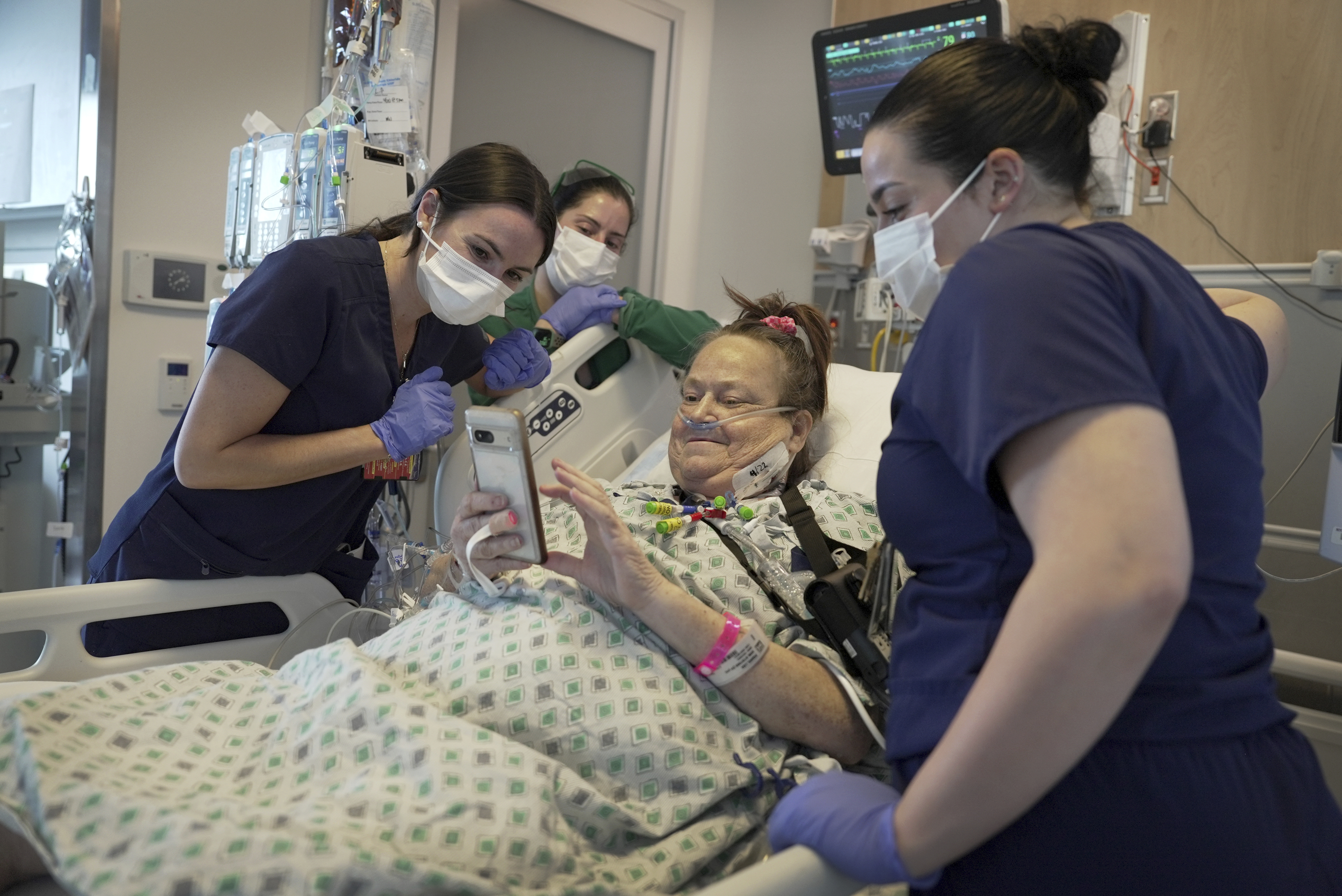Although it sounds futuristic, laparoscopy, which is a surgery performed with the help of a tiny camera that is temporary placed inside the body, has been a part of medical practice for decades. It was first used when performing tubal ligations, to prevent pregnancy, and to diagnosis abdominal conditions. It was later adapted to remove the gallbladder and the appendix. Because it allows surgeons to make smaller incisions than what is required in the traditional open surgery, patient recovery time is considerably easier and shorter.
Today, laparoscopic surgery is an increasingly popular option for people with intestinal conditions, who may need sections of the bowel repaired or removed. While recovery from open surgery for intestinal disease, which usually involves one large incision, takes an average of six weeks, people who have undergone laparoscopic surgery tend to feel back to normal in just three weeks. Below, Conor Delaney, MD, PhD, a staff surgeon in the department of colorectal surgery at the Cleveland Clinic Foundation, discusses these and other benefits of this minimally invasive surgery.
What kinds of intestinal conditions require surgery?
The common conditions that end up requiring surgery within the abdomen, particularly relating to the large and small bowel, are colon and rectal cancer, diverticulitis, and inflammatory bowel disease, such as Crohn's disease and ulcerative colitis.
What is the difference between open surgery and laparoscopic surgery?
Traditionally, abdominal surgery has been performed in an open manner, and what that means is the patient has a reasonably large incision, which varies in size between four and 10 inches long. It's usually in the midline of the abdomen, so it runs from the pubis at the lower midline of the abdomen up to the navel. The length depends on the extent of surgery and the extent of bowel that one has to free up or take out. When the surgery's performed laparoscopically, we put in three or four access ports, which are little plastic tubes that go into the abdomen that are positioned through incisions less than half-an-inch long. Then through these access ports we put in a camera, which is less than a half-inch in diameter, which is used to see what's going on inside the abdominal cavity. Through the other access ports we put in very fine little surgical instruments, about 5 millimeters in diameter. We use those instruments to free up the bowel and then we make an incision of four to six centimeters in size (around two inches) to remove the bowel.
How can you see what you are doing?
The camera is connected to a little video chip. The images then are displayed on a television screen. So the surgeon stands on one side of the patient and on the other side is a little television monitor whereby he can see what he's doing. It's a little bit like playing on a Playstation. You're standing or sitting with the control in your hand and the screen is in front of you.
How does the recovery time compare between the two kinds of surgery?
There have been several randomized, controlled trials, which are the highest level of medical evidence that we can get, showing that the time to feeling back to normal with laparoscopy is roughly half that seen with open surgery. Even though many surgeons may feel that patients recover in three or four weeks after an open abdominal operation, when we look at it in well-controlled studies, it takes an average of approximately six weeks to get over a major abdominal operation. When we look at the laparoscopic group, the average time to recovery is three weeks.
Do patients spend less time in the hospital?
Nationally, the hospital stay with open surgery is about five or six days, but if you look at the national data for Medicare (so patients over 65), the hospital stay is about 11 days. Laparoscopic surgery allows patients now go home in two or three days.
Health
How is a shorter stay beneficial?
Patients who tend to stay in hospital for longer times are more exposed to risks of getting infections. There are a variety of what we call nosocomial infections, which are infections that one can acquire while in hospital, and these can be certain types of complex and severe diarrhea, chest infections and wound infections. So when possible, when safe, we like to get patients home as early as possible.
Why is recovery quicker with laparoscopic surgery?
Patients can recover much more quickly, firstly, because they have less pain. We usually treat pain associated with these surgeries with medications that are generally opiate-based pain medications, such as morphine. These very effectively control pain, but there are side effects. It can also make them a little bit drowsy and sometimes make it hard for them to breathe, and then later on as they recover, it can make them very constipated. Laparoscopy allows us to use much less pain medication, so the patient doesn't get as constipated after surgery. Because of that, they're able to get up and move around more quickly after surgery, which also reduces the risk of blood clots developing in their legs. So partly because they need less pain medication and partly because there's less trauma from surgery, patients' bowel function usually returns more quickly.
Are longer-term complications reduced by laparoscopic surgery?
There are also some longer-term complications that are reduced by laparoscopic surgery, such as hernias, which are bulges through the old incision site, and now we believe small bowel obstruction as well. If we look at old series of patients who had open surgery, if you follow the patients carefully enough, there's approximately a 25 percent incidence of incisional hernia. When we do laparoscopic surgery, there's good evidence now that the hernias are less frequent. The other big difference is that if you do develop a hernia, the hernias are much smaller and therefore easier to fix. The other issue is that whenever one operates on any space in the body, particularly in the abdomen, there's some scarring (adhesions) inside the abdomen afterwards. This scarring can cause bowel obstruction, sometimes a week after surgery, sometimes 30 years after surgery, where the bowel kinks around one of these scars or a piece of food going through gets blocked at one of these scars, and the patient comes in with a grossly distended abdomen, pain, nausea and vomiting. Many of these patients require an operation. Recent research has suggested that the overall number of bowel obstruction episodes may be reduced by laparoscopic surgery.
What concerns might people have about laparoscopic surgery?
One of the concerns about laparoscopic surgery, particularly for complex abdominal surgery, has been that the surgeon can't put their hand inside the abdomen, they can't feel what's going on, and maybe they can't see as well. I think all the recent studies to date and the amount of surgery that's been done has dispelled that theory. In fact, those of us who do laparoscopic surgery realize that the view is just as good, and perhaps even better because we're getting large magnification of the areas that we're operating on. If there is a problem, you can always convert to an open operation. Those of us who do laparoscopic surgery all do open surgery as well. In about 10 percent of cases, we have to open up the patient's abdomen because, for instance, a cancer can't be removed laparoscopically, or there are technical difficulties. And patients who we have to convert to open surgery still do just as well as patients who are going for open surgery in the first place.
What patients are not candidates for laparoscopic surgery?
When we're considering patients who are suitable for laparoscopic surgery, there are really very few limitations to doing it. Five years ago, as surgeons were learning how to do laparoscopic bowel surgery, there were very strict criteria about who one would and wouldn't operate on. Surgeons wouldn't operate on people with cancer, people who had significant obesity and patients who had prior abdominal surgery who might have scarring that might make the surgery more difficult. Now that we at Cleveland do several hundred cases in a year per surgeon, we're so familiar with these complex situations that we really offer laparoscopic surgery to almost all patients.
Is laparoscopic surgery more expensive?
From the patient's point of view, there should be no difference because it's covered just as well by insurance as open surgery. The other benefit for the patient, however, is that they're generally off work for half the time that occurs with open surgery.
What is your advice to patients considering laparoscopy?
It's very important to find somebody who's experienced. There is a lot of evidence looking at outcomes after a wide variety of different types of surgery, both colon and small bowel, liver, pancreas and heart surgery. The outcomes are better with surgeons who are specialized and who are doing significant volumes of this type of surgery in an institution that does a high volume of surgery. If not, then one should consider looking elsewhere.



